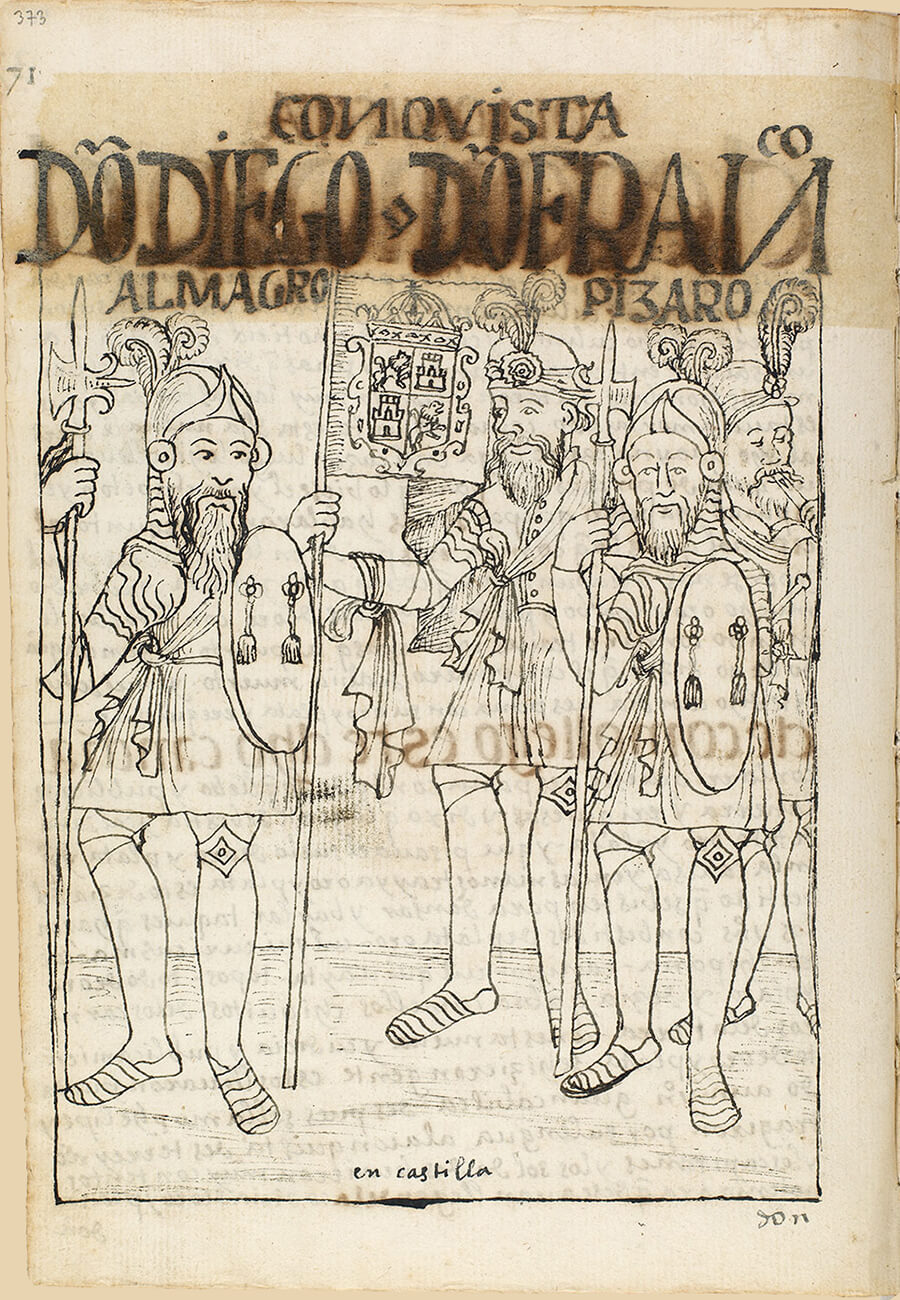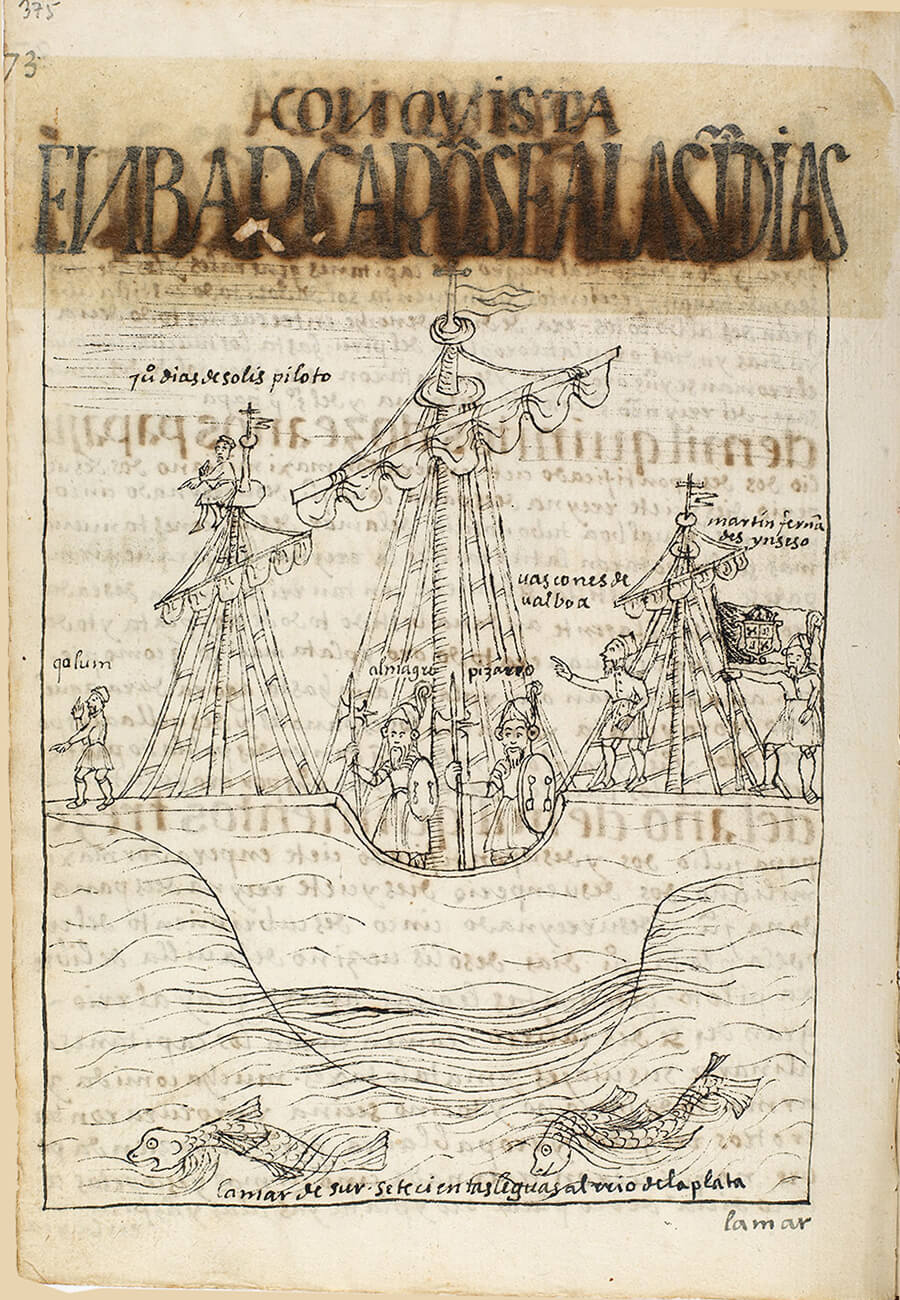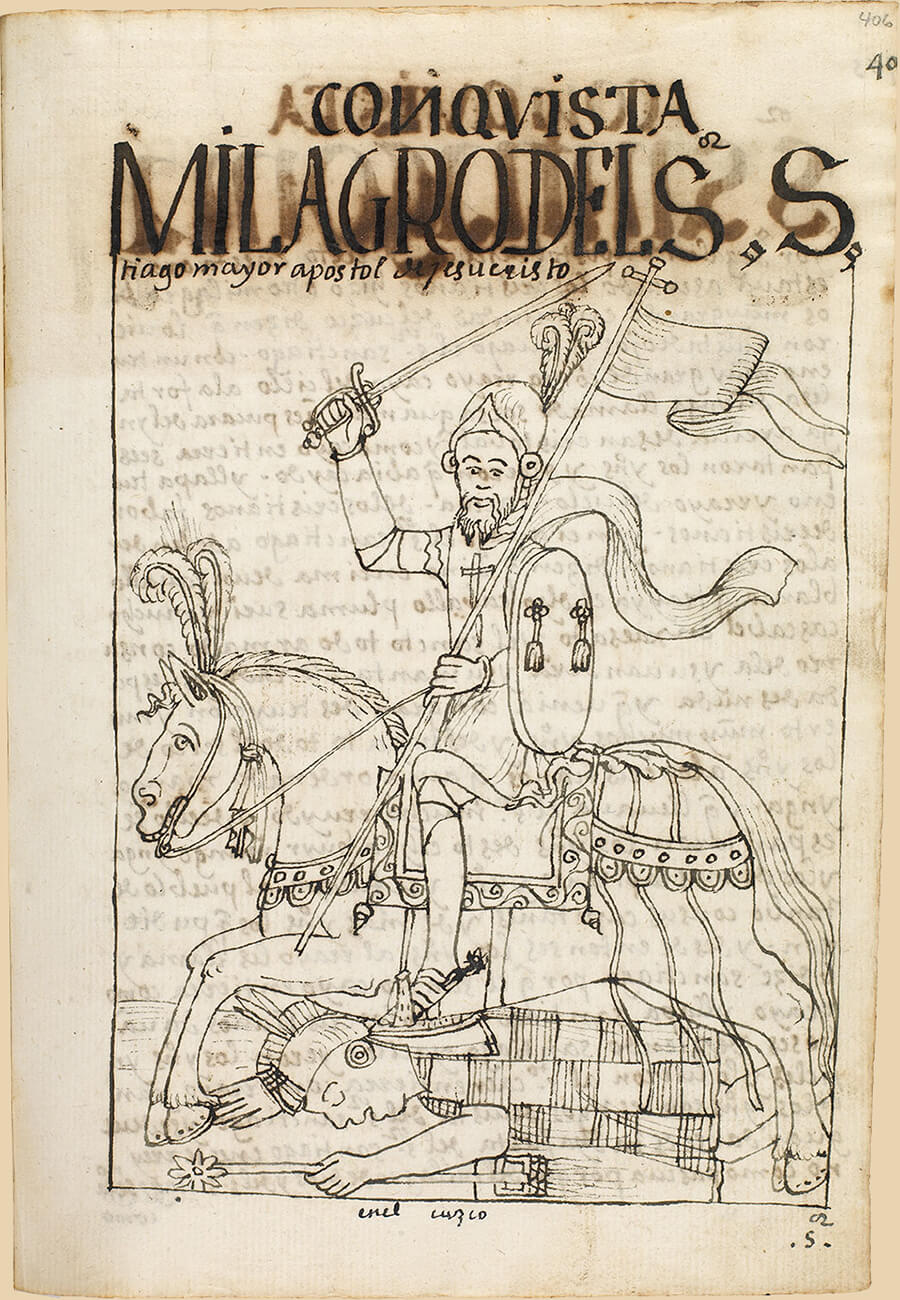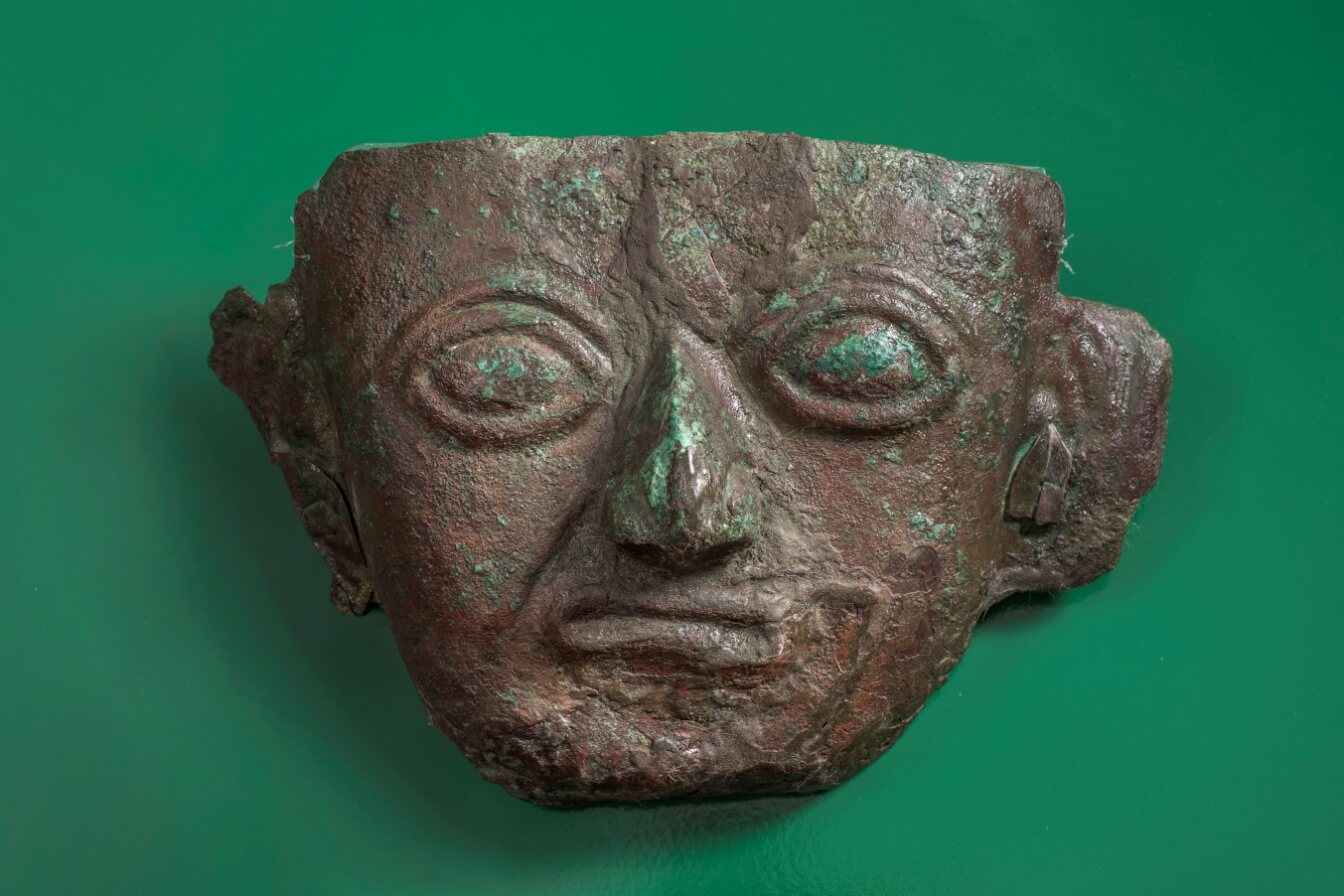The world-renowned exhibition
at the Russian Ethnography Museum
in St. Petersburg
Fundación Miguel Mujica Gallo. Lima.
The world-renowned exhibition at the Russian Ethnography Museum
in St. Petersburg
(Museo Oro del Perú y Armas del Mundo)
Fundación Miguel Mujica Gallo. Lima.
The history of Peru
Pre-Inca Cultures
Before the Incas built a mighty empire, equal to that of Romans, the ancient inhabitants of South America had already established a number of remarkable civilizations. Humans inhabited the territory stretching from the Andean valleys to the Pacific Ocean more than 10,000 years ago. Pre-Columbian Peruvian civilizations achieved spectacular success in agriculture and land irrigation, metalworking (with gold, silver, copper and bronze), pottery, road-building and architecture. Many of these achievements were adopted by the Incas and effectively used for the development and consolidation of their own power.
The most notable pre-Inca cultures include: Frías, Vicús, Moche, Nazca, Tiwanaku, Wari, Lambayeque, Chimú and Chiribaya, Inka.
Artefacts belonging to all these cultures will be displayed in The Gold of the Inca Empire: God, Power, Eternity exhibition.
The Incas
Everyone has heard of the Inca Empire, especially of their worship of deities, sacrificing gold and human lives to them. Without a doubt, the Incas are one of the most well-known and important civilizations of South America and, certainly, one of the world’s most mysterious ones. The Inca Empire, which mystically emerged as a successor to previous civilizations, existed between 1200 to 1534 AD, with its centre in Cuzco. Cuzco was the capital of this fairy-tale empire, which had in a short period of time grown extensively to include almost 7 million inhabitants.
The Incas can be compared to ancient Romans in Europe. Just like the Romans, the Incas did not concern themselves with the cultural identity of the conquered tribes. They adopted the best achievements of the conquered civilizations and then wiped away any trace or sign recalling earlier cultures.
The Inca Empire was a highly organized and stratified polity with a stable government structure, a highly developed political structure, advanced architecture and strict distribution of property. This enabled the Incas to push out the borders of their empire to eventually encompass all the territories up to the borders with Columbia, Chile, Argentina, Bolivia, and Ecuador.
To this day, the Incas continue to amaze with their construction technology, and their cities and fortresses, built in harmony with nature. Some famous examples of these are: Machu Picchu, Choquequirao and Sacsayhuamán. Moreover, the Incas had the unrivalled experience of their advanced predecessors, which they knew how to effectively use.
Every political ruler of the state was considered divine, the son of mother Earth (Pachamama) and the sun god (Inti), who were worshipped by the Incas. Worshipping the sun god was associated with deification of the emperor. Inca emperors, accoutred in gold from head to toe, were the human embodiment of the God of the Sun. The crown, diadem, pectorals, earrings and other jewellery were present everywhere in the upper moiety. They were the symbols of power in the afterlife. In the Andes, a person was buried the way he lived: the deceased left this world with their gold grave goods. Most of the objects from excavations were recovered from tombs.
At a time when Europe had been minting coins for a long time, gold and silver did not bear any commercial significance for the Incas. For them, all were solely of spiritual value: the Incas believed gold to be the “Sweat of the Sun” and silver the “Tears of the Moon”. Gold and silver symbolized gods and their power and were exclusively of religious and ritualistic value. The use of these cult metals was at the heart of religious rituals. They were used to plate statues of deities, make ritual plates, military ammunition and thousands of other objects devoted to the sun god.
When the conquistadors arrived in the capital of the great Inca Empire, the sacred city of Cuzco, in the 16th century, their eyes fell on a wonderous sight. According to Spanish archival records, in the majestic temple of Coricancha (literally the “Golden Temple”) one could find a cast wheel-sized disc made of pure gold, symbolizing the sun god, as well as full-sized figures of people and llamas. All the walls of the temple were plated with sheets of pure gold.
In the end, gold, with its alluring charm and “availability”, was a key reason behind the destruction of one of the most fascinating and sophisticated cultures of world history, i.e. the Inca culture.
The Conquerors
The Incas continued to expand until 1532, when Pizarro and his 200 soldiers – or rather his group of bandits – arrived from the shore below. He had heard that up above, in the Andes, there was a mysterious empire where one could lay his hands on untold riches.
Whereas gold was of no material value for the Incas, for the Spaniards, gold had a magical allure and they were ready to fight and die for it.
In 1532, two irreconcilable systems of values came face to face in the Inca Empire. Spanish conquistadors from the expedition of Francisco Pizarro, thirsty for gold and wealth, and the most powerful empire of America, the Inca Empire, rich and wonderfully organized. Spaniards came out victorious from this confrontation, subjugated the empire and largely wiped away the highly developed culture that had flourished for millennia. The materialistic worldview had the upper hand.
Pizarro had accomplished the impossible. With only 200 men, he was able to neutralize a 50,000-strong army of highlanders. For the adventurer Francisco Pizarro, the epidemics sweeping the empire and the internal schism resulting from the struggle for the Inca crown were a stroke of good luck. Pizarro ambushed and captured the Inca emperor Atahualpa and demanded an unreasonably high ransom – the biggest ever to be paid in pure gold. For his liberty, Atahualpa had to fill with gold the room where he was held, which measured 5 by 8 metres and was 2.5 metres high, and to fill two more rooms with silver. The emperor ordered tons of exquisite precious objects made of silver and gold to be brought (at today's prices for metal in ingots, it was delivered gold and silver for about $ 740 million).
Pizarro broke his promise and killed Atahualpa, melting the gold and dispatching it to Spain.
The death of Atahulapa brought on the demise of the magnificent Inca civilization.
Dozens of tons of gold and silver discovered by the conquerors in the temples, settlements and tombs were ruthlessly melted into large ingots and dispatched to Spain
At the time, the sudden arrival of fantastical quantities of Peruvian gold led to inflation in Europe. Many galleons packed to the gills sank under their own weight. According to a legend, Indian chiefs cursed all who made use of their riches. Hundreds of people sailed off to find for the remaining Inca treasures and perished.
Incidentally, this curse still retains its frightening grip. A lot of adventurers who to this day hunt for Inca treasures continue to disappear in mysterious circumstances.
In the face of adversity, around 181 tons of gold and 16,800 tons of silver were shipped from Peru to Spain between 1531 and 1540. The ever-empty Spanish imperial treasury was being filled with the noble metal from the New World, financing a far-reaching European policy of the Spanish Emperor Charles V.
Gold: The Fascination of Eternity
For the Incas, gold and silver had an exclusively religious, magical, and ritual value, and reflected the social status of their owners. The Incas associated gold with the “Sweat of the Sun” and silver with the “Tears of the Moon.”
In pre-Columbian Peru, gold symbolized the sun while silver the moon. Gold represented masculinity, was associated with daylight and symbolised life. Silver, on the other hand, represented femininity, was associated with the night and symbolised reuniting with the realm of the dead, the world of ancestors. In the Inca Empire, only members of the Inca tribe and priests were allowed to own and wear gold. For the Incas, gold symbolised power and high social status, while priests used it to perform religious rites.
All Spanish chronicles talk about wondrous Inca treasures. They mention entire gardens with flowers of gold and gold cobs on gold stalks with silver leaves, gold figures as big as a child and huge gold discs depicting the Sun.
During archaeological excavations conducted in Peru in the second part of the 20th century, tons of objects were found in the tombs. Some 80% of them were made of gold! An incredible amount of gold! Especially if you consider that the Spanish conquistadors melted down most of the Inca gold and dispatched hundreds of tons of the noble metal to Spain. We can only imagine the volume of this noble metal that belonged to this empire at the time of the Inca rulers
Archaeological excavations in Peru, the world’s sixth largest gold producer, are still ongoing. Even today, underground “coffers” are as full as they were at the time of the Incas. They hold the hidden gold that lures human greed with a magical power, as well as the objects which will be displayed in The Gold of the Inca Empire: God, Power, Eternity.
As in the times of the glorious Inca Empire, gold remains a symbol of power and wealth. In India, for instance, gold remains an integral part of the culture, which is clearly visible during the wedding season. The same can be observed in China during the Golden Week, when the Chinese celebrate their New Year and Spring Festival, offering each other so much gold that its price soars.
What about the rest of the world? All countries strive to hold as much gold as possible, many of them trying to recover their gold reserves from the deposits in the United States. We haven’t veered too far off from the Incas’ fascination with gold cult. Even though we no longer worship this noble metal, the “finance deity” doesn’t skip a beat. As the safest anchorage in the face of a systemic crisis and ongoing crises in real estate, gold is not losing steam in attractiveness and importance.
And finally, don’t we all dream of having as much as possible of this noble metal? Do you think gold has lost its significance? Not that we’re aware of!











